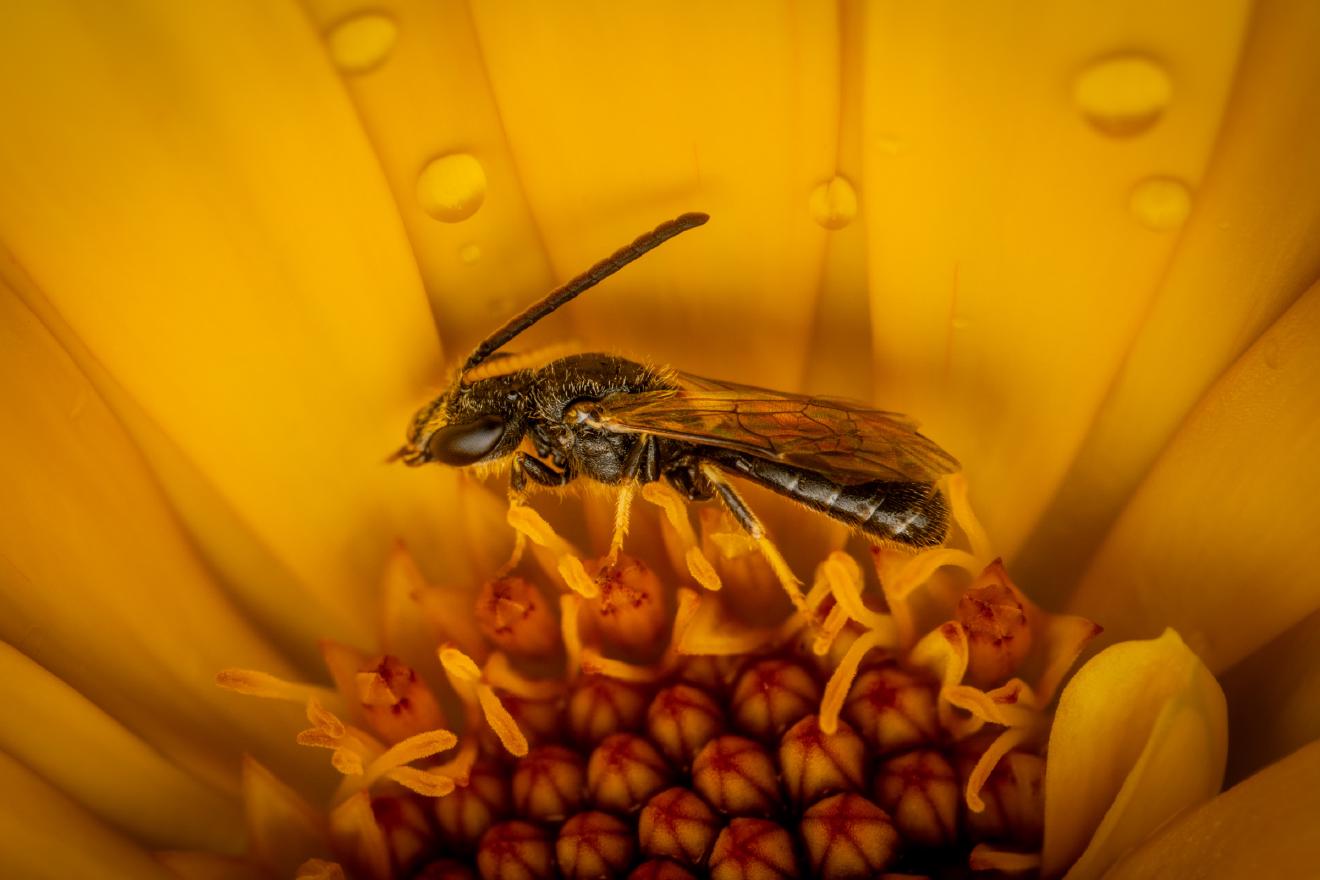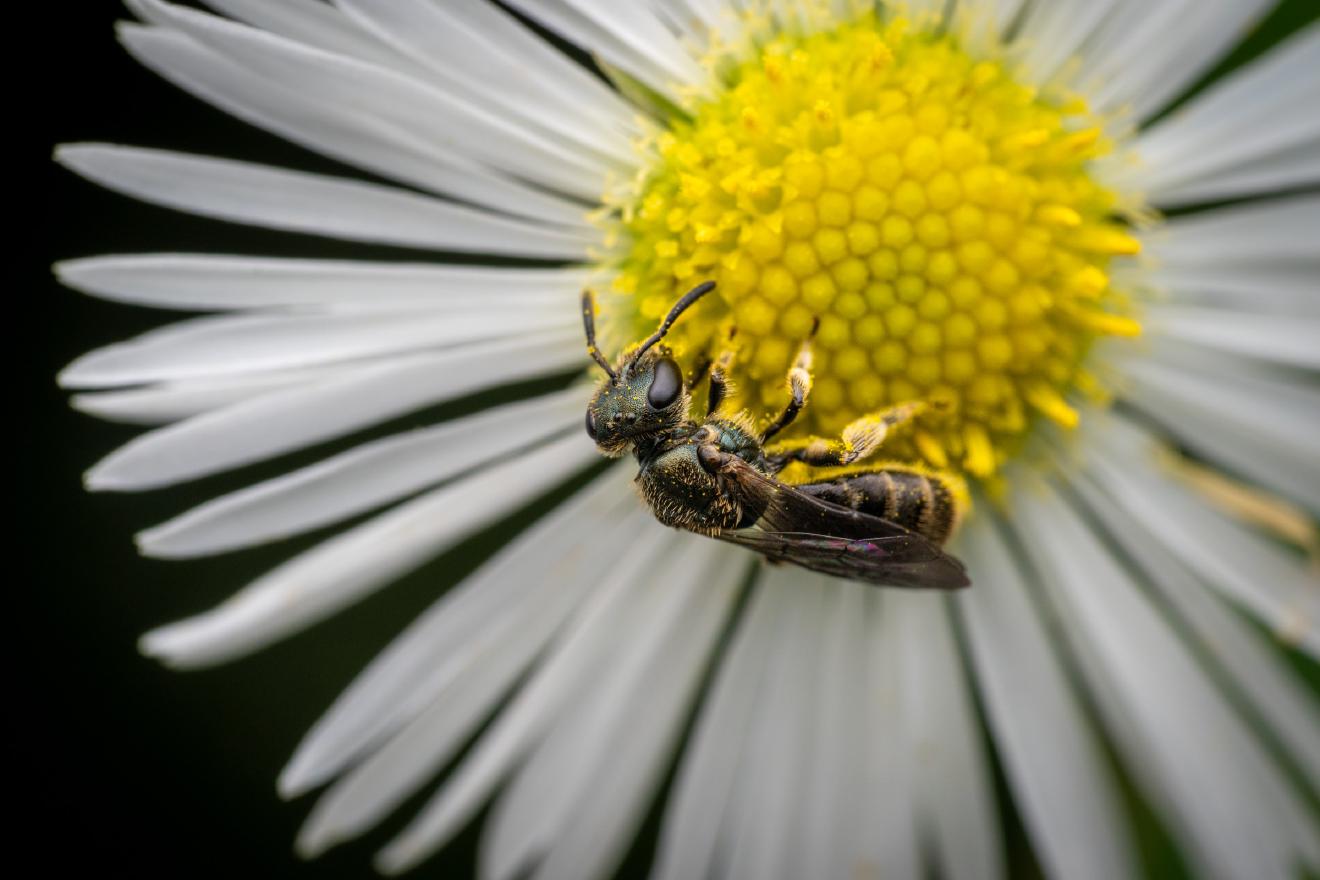Sharp-collared Furrow Bee
Lat. “Lasioglossum malachurum“
species
of genus
“Lasioglossum“
1 species
The summary provided discusses various aspects of Lasioglossum malachurum, a species of bees. It describes the taxonomy and phylogeny of L. malachurum, including its classification within the genus Lasioglossum and family Halictidae. The distribution and habitat of L. malachurum are discussed, highlighting its presence in England, continental Europe, and northern Africa, and the impact of different climates on its social behavior. The colony cycle of L. malachurum is explained, detailing the actions of the queen, construction of brood cells, and emergence of workers and reproductive individuals. The pollination behavior of L. malachurum is also mentioned, emphasizing its importance in pollinating plants used by humans. Additionally, the parasitic interactions with Sphecodes species are discussed.
Taxonomy and phylogeny
L. malachurum was described by the entomologist William Kirby in 1802. This species of bees fall within the genus Lasioglossum, which is the largest bee genus. Lasioglossum falls within the family Halictidae, which includes small to midsized bees and is commonly referred to as the sweat bee family because the Halictidae are frequently attracted to human perspiration. L. malachurum falls within the order Hymenoptera, a large order of generally winged insects containing wasps, bees, and ants. One species of lasioglossum that is closely related to the L. malachurum is L. hemichalceum.
Distribution and habitat
L. malachurum is found across England, continental Europe, and northern Africa, so is capable of inhabiting a broad range of habitats and climates. Differences in the climes of the various habitats can frequently impact the social behavior of L. malachurum within that habitat. The length of summer, for example, can affect the length of the breeding season and thereby impact the number of broods a queen may have. The longer breeding seasons in Southern Europe can also lead to reproductive capacity in worker bees, making L. malachurum in those regions not purely eusocial. Female workers in southern European colonies of L. malachurum consequently have significantly more developed ovaries than their counterparts in northern European colonies.Due to the relatively broad range of nesting habitats of the species, L. malachurum is subject to a myriad of climate-based selective pressures that cause a differential in behavior dependent upon location. Researchers have identified a tendency for L. malachurum in southern European climes to be characterized by more activity and the production of more worker broods prior to the production of a gyne brood, whereas L. malachurum in northern European climes exhibit less activity and only a single worker brood prior to the gyne brood.
Colony cycle
The queens of L. malachurum, following fertilization the previous year, begin to appear in the spring, when food sources are plentiful to sustain them after the long overwintering period. Although several females usually outwinter in the same burrow with little conflict, they start to act aggressively until a single female is left in possession of the burrow, leaving the evicted females to obtain or excavate burrows of their own.Each female with a nest tunnel then begins to build brood cells in short side passages which she excavates to the side of the main passage. Immediately following construction, each brood cell is mass-provisioned with a mixture of pollen and nectar in the form of a firm, doughy mass. An egg is laid on each pollen mass and the individual cell sealed by the female. Each egg takes 22 days to develop from an egg to a full adult. She then goes on to construct more, similar cells containing eggs and pollen masses. During this time, before the first worker brood has emerged, containing only about five workers, the foundress queen frequently leaves the nest to find provisions to build the brood cells of the nest. These nest absences are accompanied by high risk of intraspecific usurpation. Once the brood is provisioned, the queen seals the nest synchronously with all other queens in the aggregation, and all above-ground activity ceases for three weeks.Larvae from the earliest eggs are full grown and start pupation by the end of May in Central Europe (or much earlier in warmer climates), emerging from their cells by mid-June. For bees in cooler climates with shorter breeding seasons, these adults are all non-reproductive female workers, somewhat smaller than their mother. The original maternal female bee remains within the nest and guards the entrance to the burrow, now acting as a queen while her non-reproductive daughters act as workers; they go out foraging for food and help in the construction of new brood cells, in which the queen lays new eggs. For bees in warmer climates with longer breeding seasons, some of the female workers have reproductive capacity and can help breed up to two subsequent worker broods before the eventual gyne brood.Males begin to emerge from the final brood of the season by the beginning of August in Central Europe, or May–June in the Mediterranean region. Several days later, reproductive females begin to emerge, as well, which are morphologically similar to their queen. During sunny weather, the nest aggregation becomes a lek and the males vie for territory on the ground. The males mate with the new reproductive females (from both their own and separate nests), although they do not attempt mating with the non-reproductive females. Impregnated females may continue to live in their mothers’ nests, although it is thought that they only forage for their own food and do not contribute to the rest of the nest.With the arrival of the colder autumn weather, the males and non-reproductive females die off, and the impregnated reproductive females go on to spend the winter in diapause and repeat the lifecycle the following year. The lifecycle is longer, with two successive broods of workers, in southern Europe. Soil temperature specifically has been linked to decreasing the overall length of the nesting cycle. Workers in warmer soil tend to require less time to provision a new brood, possibly because they have more active time each day.
Pollination
L. malachurum bees are polylectic, meaning that they collect pollen from a broad range of unrelated plant species. Although L. malachurum displays opportunism when selecting flowers from which to extract pollen, they will generally narrow their selection of pollen during a given collection period. The species demonstrates floral consistency, and generally only collects from one pollen source during a given pollen flight. The pollination behavior of L. malachurum may be useful for humans to cultivate and develop, because the bee has been implicated in pollinating species of plants that are commonly used by humans for food and for medication.
Parasites
L. malachurum colonies are parasitized by the kleptoparasitic species of the genus Sphecodes. The bees of this genus have developed a strategy for invading the nest of host species that involves avoiding interaction with any host individuals. The parasites generally parasitize L. malachurum nests during the early spring when the foundress queens need to leave their nests unattended to forage. Other species enter guarded nests during the second brood cycle and kill the guard, as well all other present host individuals, before laying eggs in the brood cells. After oviposition, the parasite closes the brood cells to prevent the host female from returning and replacing the parasite eggs. Because the parasites in the genus Sphecodes parasitize a broad range of other bee species, few adaptations to the specific L. malachurum bee colonies exist.
== References ==







Ancestry Graph
Further Information
Copyright

This article uses material from the Wikipedia article Lasioglossum malachurum the free encyclopedia Wikipedia which is released under Creative Commons Attribution-ShareAlike 4.0 International License). On Wikipedia a list of authors is available.
